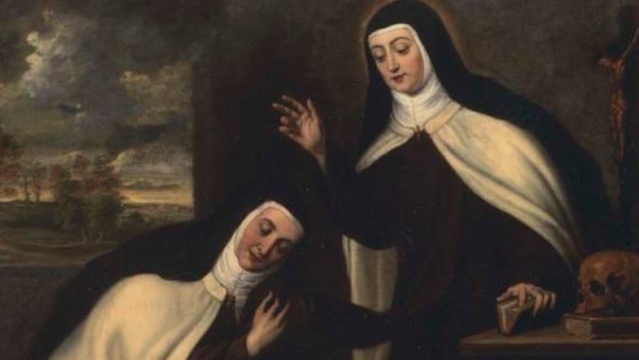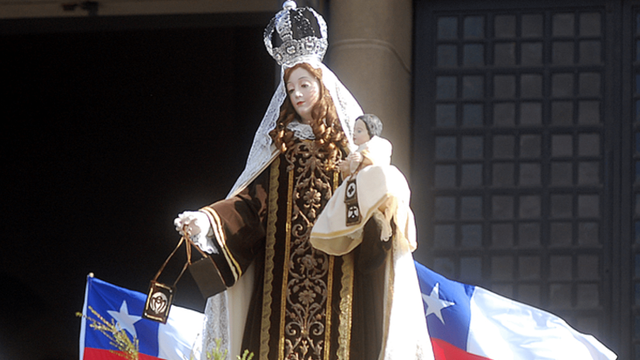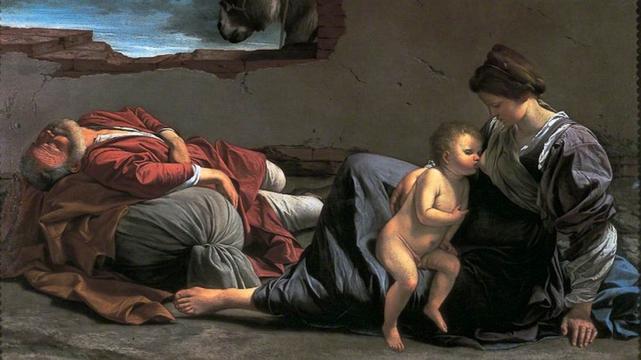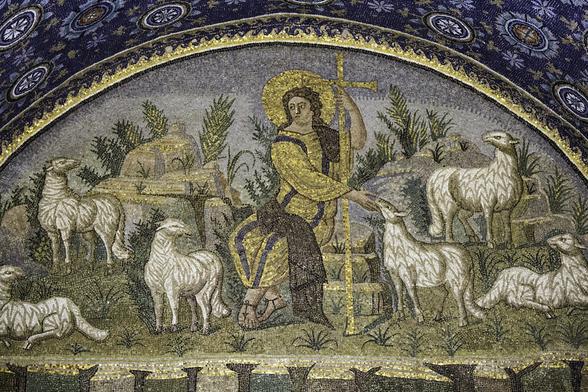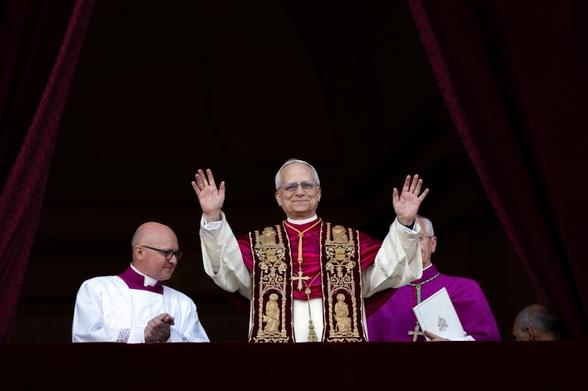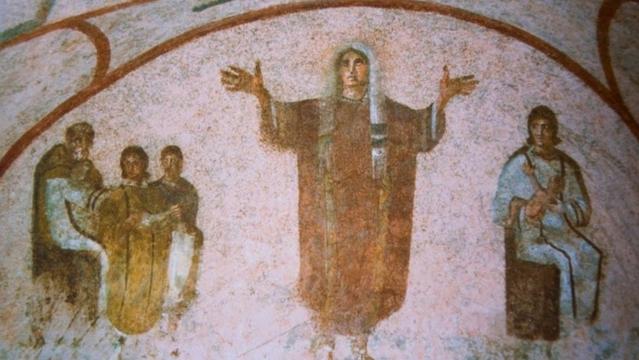Quote of the day, 7 June: Blessed Anne of St. Bartholomew
I was very small, not knowing yet how to speak, when one day they put me on my feet in a room where my sisters were working.
My mother, passing by, said to them: “Be very careful that the little one does not fall, as she might kill herself.”
One of my sisters then said: “God would do her a great favor if she died, for now she would go to heaven.”
“Do not say that,” replied another of my sisters. ”May she not die; for, if she lives, she may become a saint.”
“That is doubtful,” replied the first. “Now there is no danger for her; while children who have reached the age of seven years, may sin.”
I heard all this, and when my sister uttered the word “sin” I raised my eyes to heaven, without knowing, as it seemed to me, what I was doing, and I thought that I saw the heavens open, and our Lord appeared to me in great majesty.
As it was something new, I felt pierced to the heart with fear and reverence for Him who was present, for I recognized that it was God, and that it was He who would judge me. From this moment, there was ever within me a great fear of sin, as my sisters called it, and of offending God.
Having reached the age of seven years, the thought came to me one day that I might, perhaps, have the misfortune to sin, and I wept. One of my sisters asked me why I wept. I answered, “Because I fear to commit sin, and I would rather die.”
Because of this fear, I began to have devotion towards several saints, but, before all, to the holy angels and to St. Joseph, whom, in my childlike simplicity, I took to be an angel.
It was, however, the most holy Virgin who had my first homage. I had great confidence in her.
I honored also the Eleven Thousand Virgins, St. John Baptist, and others among the blessed. Every day, I begged them to keep me from sin, and I begged them particularly for the virtue of chastity.
With such intercessors before God, I lived in great consolation and was very devoted to the good Jesus. I felt in my soul wonderful movements of His love, and in all that I did, my only desire was that my Jesus should see me, that He should look at me and be contented with me.
These were my habitual desires and thoughts when I was alone. I would look out of the windows into the fields to see if I could perceive Him, and this I did with great simplicity.
Blessed Anne of St. Bartholomew
From her autobiography
First Book, Chapter II, Horror of Sin
Anne of St. Bartholomew, M; Bouix, M 1917, Autobiography of the Blessed Mother Anne of Saint Bartholomew, inseparable companion of Saint Teresa, and foundress of the Carmels of Pontoise, Tours and Antwerp, translated from the French by Michael, M A, H. S. Collins Printing Co., Saint Louis.
Featured image: Sainte Thérèse bénissant Anne de Saint-Barthélémy, unknown artist, oil on canvas, no date, from the collections of the Monastère du Carmel de Pontoise (Val-d’Oise, France). Photo: Conservation des antiquités et objets d’art du Val d’Oise. © Ministère de la Culture (France), Médiathèque du patrimoine et de la photographie / diffusion GrandPalaisRmn (Public domain).
⬦ Reflection Question ⬦
How can we help children today to develop a healthy horror of sin, like Blessed Anne?
⬦ Join the conversation in the comments.
#fear #laySister #prayer #sin #StAnneOfStBartholomew #vocation


